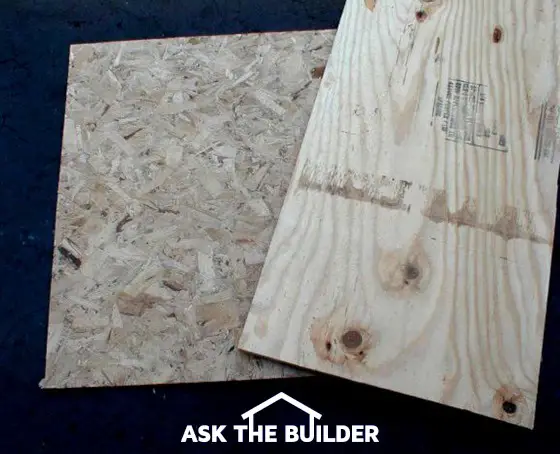OSB Board Qualities

OSB Board
I will always remember the first time I used oriented strand board (OSB). It was offered as a substitute for roof sheathing on a commercial building I built in the late 1980's. The project budget was tight, the product passed code, and it was certified. I thought I would give it a try. Wow! It was a different beast. The product was heavy, it was very slippery on one side, and it reacted violently when it got wet. If you can't tell, I wasn't very happy. But, you need to try things.
First Generation
The OSB I was using was some of the first that was introduced to the Cincinnati, Ohio, marketplace. As with all new products, it didn't have all of the bugs worked out of it. For the most part, the product hasn't changed too much at all, other than it has gained widespread acceptance among many builders and remodelers. If OSB gets wet, it still swells. It still is somewhat heavy. It has many great application uses and when used as directed it is a good substitute for plywood in many situations.
Cost it Out
Plywood and OSB are commodity items. This means that the price of the finished product can and does fluctuate in direct response to supply and demand. In other words, the pricing is not always stable.
If you have a job coming up and you feel plywood might be a better choice, then cost it out. There may only be a small up-charge to get plywood. Sometimes the cost is less than one dollar per sheet. If you have only 150 sheets on a job, then the slight cost differential might well be worth it to you.
Imposters!
There are products out there that look like OSB. Waferboards, flakeboards, fiberboards and such are not OSB. When you use OSB for a roof, sidewall or sub-floor, it MUST have the APA label. If it doesn't, don't use it.
OSB Limitations
OSB can do many things that plywood can, but not everything. Because the wood strands in OSB are encapsulated with the bonding resin, chemical treatments can't penetrate into the wood fibers. This means that you can't successfully treat OSB with fire and moisture resistant chemicals. Did you know that many, many people don't realize that you can actually buy treated plywood just as you buy treated lumber? Friends of mine are always amazed when I show them treated plywood that I have used on an outdoor play set of mine.
The Cryptic Label
How many times have you seen the stamped label on a sheet of plywood or OSB? I have seen tens of thousands of them. The truth is, I never really paid much attention to them before. These labels holds all sorts of valuable information. They tell you if you are about to use the right product! For example, say you want to use a piece of plywood for an outside sign. You buy a regular sheet that says "Exposure 1" on it and feel comfortable because this type has held up well for months in a building situation. It would be the wrong product!
You want the label to say Exterior, not "Exposure 1".
The labels contain all sorts of information that will help you keep money in your pocket. If you install the wrong material and something goes wrong in the future, the factory representative will look at the label to see if you used the right product in the right place.
Column B304